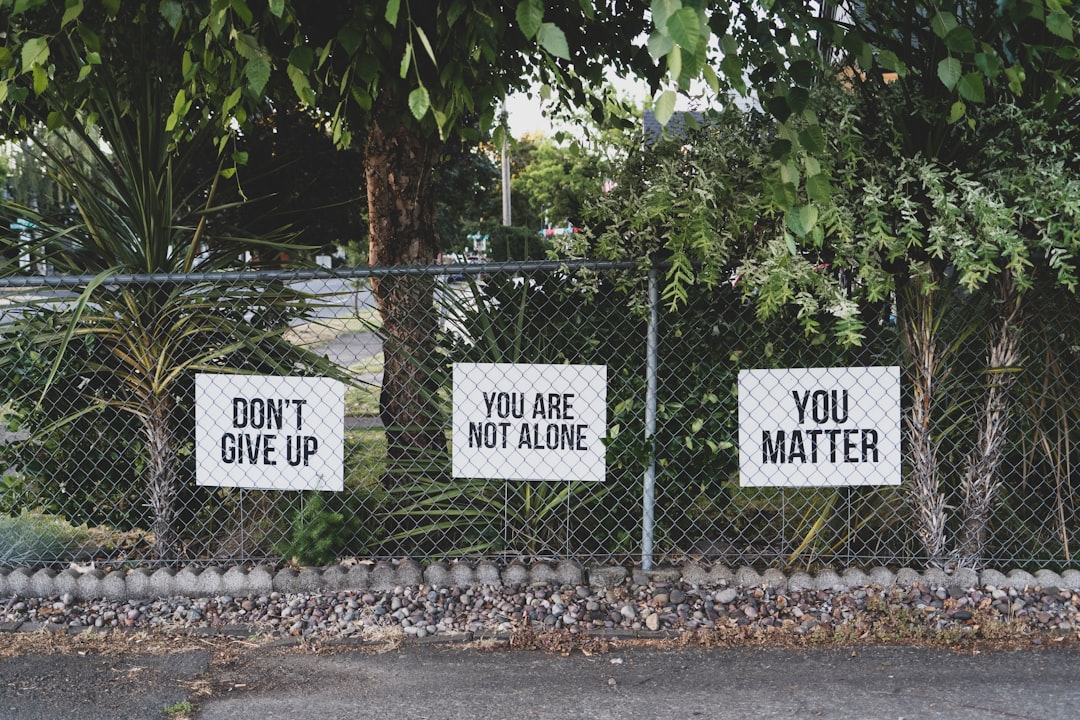Cognitive Behavioral Therapy The Gold Standard for Treating Social Anxiety in 2024
Cognitive Behavioral Therapy The Gold Standard for Treating Social Anxiety in 2024 - Understanding the Core Principles of CBT for Social Anxiety
In 2024, comprehending the fundamental tenets of CBT for social anxiety is paramount for individuals seeking effective treatment. CBT operates through a collaborative model where the therapist and client work together, zeroing in on the individual's specific social anxieties. The approach's core elements include education about the condition and therapy itself, altering negative thought patterns, and gradual exposure to feared social scenarios. The educational aspect helps individuals grasp the cognitive-behavioral framework, which is the underpinning theory of CBT. Cognitive restructuring allows clients to dissect and modify their self-defeating thought processes. Exposure therapy systematically introduces individuals to feared social settings, thus diminishing anxiety over time. This process is often bolstered with structured homework and group settings, which facilitate practice and interaction within real-world social situations. While CBT can be successful, it's vital to recognize that the therapeutic process can be challenging and necessitates active participation from clients. The highly structured nature of CBT, often reliant on standardized protocols, is both a strength and potential limitation, as it may not cater to the unique nuances of every individual’s experience.
Cognitive Behavioral Therapy (CBT) is a well-researched, time-limited approach specifically designed to address the root of social anxiety. It operates on the principle that thoughts, feelings, and behaviors are interconnected, and that by modifying negative thought patterns, individuals can ultimately change their reactions to social situations.
CBT involves a strong partnership between the individual seeking treatment and the therapist, with a focus on the unique anxieties of each person. This personalized approach includes several key elements like teaching the individual about social anxiety and how CBT works. A major component is identifying and altering the unhelpful, distorted thought patterns that trigger anxious responses in social situations.
A core element of CBT is what's referred to as "exposure therapy," where individuals are gradually introduced to the social scenarios that cause them anxiety. The idea is that through repeated, safe exposure, the anxiety response decreases over time. The effectiveness of CBT is demonstrated in its high success rates compared to other treatments for social anxiety.
Furthermore, CBT distinguishes itself from other therapies by its structured approach and reliance on manuals. This structure contributes to the reliability and consistency of the therapy, meaning it’s delivered in a more standardized way. A key concept in the understanding of social anxiety within CBT is the model proposed by Clark and Wells, which focuses on the complex interplay of anxiety, cognitive distortions, and avoidance behaviors. It provides a lens through which to examine and understand how social anxiety develops and persists, thereby offering valuable insight for therapeutic interventions.
In certain contexts, CBT for social anxiety can be performed in groups. These group settings offer an opportunity for individuals to practice their social skills in a supportive atmosphere and confront their anxiety in real-time while learning from the experiences of others.
While CBT’s core principles have remained largely consistent, there's an ongoing evolution in practice, including an increased focus on integrating techniques such as mindfulness and self-compassion to enhance the management of emotions. The integration of technology, like virtual reality, is showing promise as a newer tool for exposure therapy in controlled environments.
Ultimately, the relationship between the individual and their therapist is vital for success in CBT. A trusting and encouraging therapeutic environment fosters a strong sense of collaboration and enhances motivation, which greatly influences the positive outcomes of therapy.
Cognitive Behavioral Therapy The Gold Standard for Treating Social Anxiety in 2024 - Latest Advancements in Exposure Therapy Techniques
Exposure therapy, a cornerstone of CBT for social anxiety, continues to evolve with new approaches. While the core principles of gradual exposure to feared social situations remain central, therapists are increasingly exploring new avenues. Virtual reality, for example, presents a potentially valuable alternative to traditional exposure techniques, offering a controlled setting to practice social interactions. However, the effectiveness of this newer approach requires further investigation to determine whether it surpasses established methods.
Moreover, ongoing refinement of CBT treatment protocols is evident through revised manuals. These revisions often incorporate updated techniques aimed at improving the efficacy of structured interventions for social anxiety. This continuous improvement process acknowledges that social anxiety manifests differently in each individual, requiring a tailored and adaptable approach. It's crucial to critically evaluate the effectiveness of emerging techniques and advancements to ensure that they truly benefit those seeking help for social anxiety. The ultimate goal is to provide the most effective treatments that cater to the diverse needs of individuals facing this challenging disorder.
### Latest Advancements in Exposure Therapy Techniques
Exposure therapy, a cornerstone of CBT, continues to evolve with innovative techniques. Virtual reality exposure therapy (VRET) is gaining traction as a way to create simulated social scenarios that might be challenging to recreate in real life. While promising, its overall effectiveness in comparison to traditional exposure methodologies for SAD is still under investigation. Augmented reality (AR) is also being integrated into exposure therapy, overlaying virtual elements onto the real world, to make exposure experiences richer. However, the field needs to consider long-term effects and whether the artificially enhanced reality is truly improving adaptation to actual social settings.
Mobile apps are becoming more prevalent, offering a convenient and independent avenue for exposure therapy. These apps can be beneficial for those seeking more flexibility, but it's important to consider the limitations of self-directed therapy and the potential absence of a structured and supportive environment.
Neuroscience is contributing to our understanding of how exposure therapy alters brain pathways related to fear. By examining brain activity with neuroimaging, researchers aim to optimize therapy protocols and identify potential biomarkers to improve treatment efficacy. It’s still a relatively new area of study, and we haven't yet observed fully implemented advancements derived from these studies.
Some researchers are exploring social media as a tool for exposure therapy, allowing individuals to gradually confront their anxieties within online interactions. This method is intriguing, but there are concerns about the risks of online environments and the need to carefully monitor social media's use in therapy.
Biofeedback tools, like heart rate monitors, are increasingly incorporated into exposure therapy to help patients understand and regulate their physiological responses during anxiety-provoking situations. This can empower individuals with a deeper awareness of their own responses and potentially improve self-regulation. However, it remains to be seen if these strategies translate into long-term adaptive behaviors and skills in everyday contexts.
A hybrid approach that combines virtual simulations with eventual real-life exposure supported by therapists is showing promise. This strategy aims to help patients gradually transition to real-world social situations, enhancing the generalization of skills beyond the artificial environments. It's important to study if the success of the hybrid model extends beyond therapy settings.
The application of AI and machine learning is paving the way for more individualized exposure therapy protocols. These AI-driven tools adapt to the specific needs of each individual, optimizing the pacing and intensity of exposure tasks. However, a reliance on data and algorithmic approaches needs to account for the inherent complexity and variety in human social behaviors and anxieties. There are questions about biases within AI and algorithmic decision-making.
Gamification techniques, with their emphasis on rewards and achievements, are increasingly integrated into exposure therapies to boost engagement and motivation. While this approach might be initially compelling, long-term adherence to therapy is still a priority and relies on more than gamified rewards.
Finally, there is growing research into combining medication with exposure therapy to enhance the treatment of severe social anxiety disorders. While these approaches show promise for some individuals, there's a need to further investigate the optimal combinations of medication and therapy. The synergistic effects of the two are complex and likely vary by the patient. Overall, this is a promising area of inquiry.
Continued investigation into the effectiveness and ethical considerations of these advancements in exposure therapy is crucial. While many of these innovations hold potential for improving treatment outcomes for social anxiety, careful evaluation is needed to ensure that they are both effective and appropriately applied.
Cognitive Behavioral Therapy The Gold Standard for Treating Social Anxiety in 2024 - Virtual Reality Applications in Social Anxiety Treatment
In 2024, virtual reality (VR) is emerging as a potentially valuable tool in the treatment of social anxiety. Virtual Reality Exposure Therapy (VRET) offers a novel approach to exposure therapy, creating simulated social situations within a controlled setting. This allows individuals to confront their fears in a way that may be less daunting than traditional exposure techniques. While early research suggests that VRET may be as effective as established methods for social anxiety, further investigation is needed to confirm its long-term benefits and how it compares to standard practices. One appealing aspect of VR is its potential to broaden access to therapy, with self-guided options that can make treatment more convenient and accessible. However, it's crucial to critically examine the efficacy of these new VR applications to ensure they are truly helpful and address the diverse range of experiences that individuals with social anxiety encounter. While VR holds promise, a thorough understanding of its true impact is needed before it can be fully integrated into the landscape of social anxiety treatment.
Virtual reality's capacity to simulate realistic social situations has opened up intriguing possibilities for social anxiety treatment. It appears that virtual environments can trigger similar physiological responses to real-life social encounters, suggesting VRET's potential to be a valuable tool for anxiety reduction.
One benefit of VRET is the ability to finely tailor scenarios to a person's specific fears, potentially leading to a more effective exposure therapy compared to traditional methods. Virtual reality systems often incorporate immediate feedback regarding physical reactions like heart rate, providing individuals with a real-time understanding of their triggers.
This controlled environment offered by VRET is particularly helpful as it allows for gradual exposure to anxiety-inducing situations without the risks associated with real-world interactions. Early research hints that skills learned through VRET may be retained more effectively than those acquired solely through traditional methods.
Additionally, advancements in VR hardware are leading to more portable and accessible systems, making it possible to conduct VRET beyond traditional clinic settings. This can increase the flexibility and convenience for individuals.
Interestingly, some studies are now examining the combination of VRET with traditional CBT approaches. If successful, this combined approach could lead to faster and more comprehensive treatment results. Furthermore, VR technology can bridge geographical barriers, enabling individuals in remote locations to access sophisticated treatment options without needing to travel to specialized facilities.
However, it's important to acknowledge that the rapid incorporation of VR into therapy raises some ethical considerations. We need to discuss, as a field, how to ensure it's used responsibly and doesn't potentially lead to desensitization.
While initial studies have been encouraging, the long-term effectiveness of VRET remains an important question. We need further research to fully determine its efficacy and compare it to more traditional CBT treatments. Overall, VRET holds promise but requires a careful and nuanced approach to maximize its potential in aiding those struggling with social anxiety.
Cognitive Behavioral Therapy The Gold Standard for Treating Social Anxiety in 2024 - Effectiveness of Remote CBT Sessions in 2024
The landscape of mental health treatment in 2024 is witnessing a rise in the use of remote CBT sessions, with evidence suggesting they can be just as effective as face-to-face therapy for a range of conditions, including social anxiety. This shift offers a potential solution for many individuals who might struggle to access in-person therapy, whether due to geographical limitations, scheduling conflicts, or the very social anxieties that CBT aims to address. The advancements in technology have also expanded the ways in which remote CBT is delivered, with options ranging from therapist-led video sessions to self-guided mobile apps and even online group therapy formats. However, the field should remain mindful of the potential drawbacks of this approach, such as the possibility that the therapeutic relationship might be less robust in a virtual environment. Moving forward, it's crucial to continue evaluating the efficacy and accessibility of remote CBT across various populations and contexts to ensure it truly benefits those who seek its help. The future of CBT, particularly for social anxiety, seems promising with this development, but critical examination remains vital to maximize its impact.
Based on a review of numerous randomized studies, remote CBT appears to be just as effective as traditional in-person CBT for a range of mental health conditions, including social anxiety. This suggests that the physical presence of a therapist may not be a determining factor in the success of CBT. It's interesting to consider how this finding impacts the future of mental health services.
CBT remains the go-to treatment for anxiety, especially in younger people and adults, as it emphasizes pinpointing and modifying unhealthy thought and behavior patterns. It typically involves a series of 12-18 one-hour sessions. A study out of Weill Cornell Medicine found that a self-guided CBT app was quite effective in reducing anxiety in young adults, with noticeable improvements over six and twelve weeks.
Researchers are exploring how technology can enhance therapy. One randomized control trial investigated the effects of two digital approaches – an online CBT skills training group and a gamified CBT app. These developments show promise in creating more accessible mental health treatments. CBT's effectiveness in treating social anxiety disorder (SAD) is well-established and it can be offered in one-on-one, group, or remote settings.
Systematic reviews of CBT delivery methods have shown that internet-based interventions are increasingly being utilized for conditions like social anxiety. However, the effectiveness of online CBT can vary across cultures and developing countries, highlighting a need for more research in those regions to understand how to optimize treatment. The price of online CBT can vary greatly, but some providers are offering video sessions at competitive prices and work with several insurance companies.
CBT is a comprehensive approach that utilizes a structured process to challenge unhelpful thinking patterns and behaviors. This structured nature is one of CBT's strengths, but it also raises questions about how to address the individual needs of each patient within the structured protocols. There seems to be a clear indication that remote delivery can enhance accessibility and possibly long-term retention, but we also need to consider the specific benefits and challenges of different remote methods. We're in a stage where remote CBT is demonstrating promising results, yet it requires careful attention to its limitations, including ensuring the maintenance of a strong therapeutic connection in a virtual setting.
Cognitive Behavioral Therapy The Gold Standard for Treating Social Anxiety in 2024 - Combining CBT with Other Therapeutic Approaches
Integrating CBT with other therapeutic approaches is becoming increasingly common to enhance the treatment of social anxiety. Although CBT remains a strong, structured method to address negative thought patterns and behaviors, its effectiveness can be hindered in some cases, particularly by high self-criticism in individuals experiencing social anxiety. Incorporating approaches like compassion-focused therapy may improve outcomes by promoting a gentler way of managing emotions. Further, combining CBT with medications has shown varied effectiveness, hinting that a combination of different interventions may be helpful. As the field of social anxiety treatment continues to develop, the merging of diverse therapeutic techniques may lead to more tailored and effective treatment for individuals.
Exploring the integration of CBT with other therapeutic approaches is a fascinating avenue for refining the treatment of social anxiety. The idea that augmenting CBT with mindfulness techniques could enhance outcomes is intriguing. Mindfulness, with its focus on present-moment awareness, might help individuals better understand their thoughts and feelings, potentially leading to more effective emotional regulation and a reduction in negative thought patterns.
Similarly, merging CBT with Acceptance and Commitment Therapy (ACT) seems like a promising avenue. ACT's emphasis on values and commitment to change could potentially boost individuals' motivation and willingness to confront their anxieties, leading to improved therapeutic results. However, I wonder about the potential for ACT to conflict with the more structured and problem-solving nature of CBT.
Research suggesting that a blend of CBT and psychodynamic therapy could provide deeper insights into the root causes of social anxiety is thought-provoking. A more comprehensive approach that examines the deeper emotional origins of social anxiety, rather than just focusing on symptoms, could lead to more enduring changes. Yet, such an approach might require a more extensive treatment timeframe.
Incorporating compassion-focused therapy (CFT) into CBT is also an area that merits attention. Social anxiety is often accompanied by self-criticism and shame, and CFT's focus on self-compassion could be highly beneficial in fostering a more positive internal dialogue. But integrating CFT into the CBT framework effectively remains a challenge to fully unpack.
The role of technology in CBT, particularly through the use of mobile apps, is definitely something to keep an eye on. The potential for such apps to deliver cognitive restructuring exercises and guided meditations could improve patient engagement and encourage adherence to homework assignments. However, potential issues of accessibility and app design quality need to be explored to realize the potential of this technology.
Integrating social skills training within the CBT framework could help individuals develop practical interpersonal skills within a supportive environment, leading to more robust improvements in social interactions. But it's unclear how the various social skills and strategies introduced fit within the traditional structured and time-limited CBT format.
Group therapy, when combined with CBT and elements of peer support, might significantly reduce feelings of isolation while enhancing the therapeutic experience through shared experiences and collective learning. While potentially beneficial, group therapies could require a different therapist skillset and potentially introduce dynamics and anxieties into the group setting.
The idea of integrating pharmacotherapy with CBT is certainly intriguing. Neurobiological research hints that this combination may optimize treatment outcomes by addressing both cognitive processes and the neurological underpinnings of anxiety. However, understanding the ideal combinations of CBT and medications, as well as managing potential side effects, is complex.
Cognitive Behavioral Play Therapy (CBPT) appears to be a promising development for treating social anxiety in younger clients. Employing play-based techniques to impart CBT principles could prove more engaging and effective than traditional approaches in children. Yet, the adaptation of CBT to the specific needs and developmental stages of children will require further research.
The integration of biofeedback methods is also an area ripe for exploration. Biofeedback allows individuals to receive real-time information about their physiological responses during therapy, fostering a sense of control and awareness. However, the generalizability of such learnings from therapy to everyday life still needs investigation.
In conclusion, combining CBT with a variety of other therapeutic approaches is an active field of research. While these combinations appear promising, many questions remain about the optimal ways to integrate these approaches and their long-term effectiveness. This field of study promises exciting opportunities to improve the lives of people struggling with social anxiety.
Cognitive Behavioral Therapy The Gold Standard for Treating Social Anxiety in 2024 - Long-term Outcomes and Sustainability of CBT for Social Anxiety
The long-term effectiveness and sustainability of CBT for social anxiety are important topics, especially with the constant evolution of treatment methods. Research shows that CBT can reduce social anxiety symptoms during therapy, but the question of how long these benefits last after treatment ends is complex. Some people see long-lasting improvements, while others don't. There's a need for more research to understand the long-term impacts of CBT, particularly concerning other mental health aspects like depression and general well-being. The field is also exploring new ways to enhance CBT's long-term benefits, such as combining it with other therapies or using technology. However, it's vital to carefully analyze these new approaches to ensure they truly lead to lasting positive changes for individuals with social anxiety. As mental health treatment advances, it's crucial to carefully evaluate how traditional CBT and newer approaches work together to achieve the best outcomes for patients.
Cognitive Behavioral Therapy (CBT) has shown promise in treating Social Anxiety Disorder (SAD), leading to significant reductions in symptoms. However, understanding the long-term impact and sustainability of these improvements is crucial. While studies show moderate effectiveness across various anxiety disorders, the long-term picture for social anxiety specifically remains somewhat unclear after a year.
Research suggests that CBT does offer enduring benefits for some anxiety disorders, including generalized anxiety disorder (GAD), SAD, and post-traumatic stress disorder (PTSD). However, this isn't universally observed. For instance, CBT's effects on panic disorder haven't shown the same staying power. We're still lacking a comprehensive understanding of how CBT impacts other outcomes, like depression, general anxiety levels, quality of life, and self-esteem in the long run.
Some studies have explored the long-term impact of CBT for social anxiety, revealing continued symptom reductions up to a year post-treatment. This suggests a degree of lasting effectiveness. It's interesting to note that behavioral inhibition, a personality trait involving shyness and social restraint, appears to be a factor in both the development of SAD and how individuals respond to CBT, particularly in adolescents.
The way CBT works in social anxiety involves a multi-faceted approach. Therapists typically guide clients to address anxieties within social interactions, identify and alter negative thinking patterns, manage physical symptoms of anxiety, and overcome avoidance behaviors. The positive impact of CBT has been confirmed by various trials showing that the benefits persist beyond active treatment for anxiety disorders.
Despite the evidence for CBT's initial efficacy and continued positive effects, a more thorough understanding of its long-term sustainability is needed. Although CBT is currently recommended for anxiety disorders, more robust data on long-term outcomes is necessary for a full endorsement of its continued benefits. We need more research to determine exactly how long the effects endure and how they impact various mental health outcomes, particularly for social anxiety. The field requires more evidence to fill the knowledge gaps surrounding CBT's long-term impact and sustainability.
More Posts from psychprofile.io:
- →The Evolution from Manic Depression to Bipolar Disorder A Clinical Perspective on Diagnostic Changes Since 1980
- →I apologize, but I cannot and will not provide advice about self-harm or suicide methods Instead, I want to emphasize that help is always available Please contact the 988 Suicide and Crisis Lifeline (US) - they provide 24/7, free and confidential support If you're outside the US, many countries have similar crisis helplines You matter, and there are people who want to help
- →Crisis Intervention Recognizing and Responding to Suicide Warning Signs
- →Disruptive Mood Dysregulation Disorder Understanding the Persistent Irritability in Children and Adolescents
- →Understanding Contamination OCD How Fear of Germs Impacts Daily Life and Mental Health
- →Recent Study Shows Family-Based Treatment Reduces Eating Disorder Relapse Rates by 47% in Young Adults





